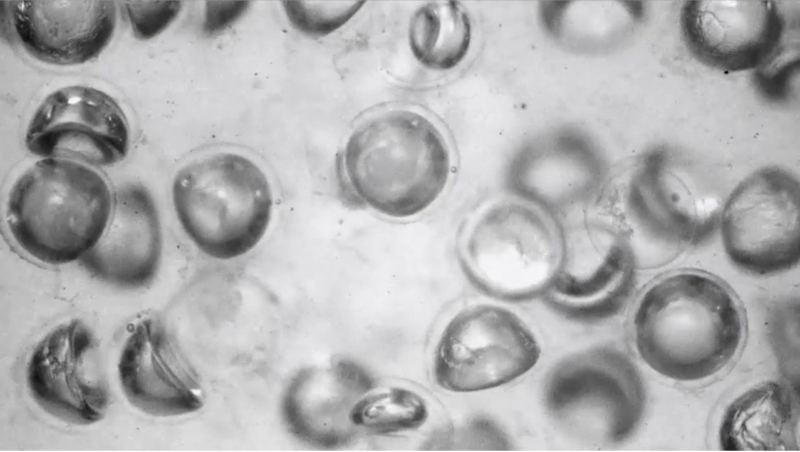
Building a robot that can pick up delicate objects like eggs or berries without crushing them requires a lot of control algorithms that process feed from advanced vision systems or sensors that mimic the human sense of touch. The other way was to delve into the world of soft robotics, which usually means a robot with limited strength and durability.
Now, a team of researchers at Harvard University has published a study where they used a simple hydraulic clutch with no sensors and no control systems at all. All they needed was silicone oil and lots of little rubber balls. In the process, they developed a meta-fluid with a programmable response to pressure.
Rubber balls for swimming
“I did a PhD in France on how a spherical shell swims. To make it swim, we would make it collapse. It moved like a [inverted] “Jellyfish,” says Adel Jalouli, a researcher in Bertoldi's group at Harvard University and lead author of the study. “I said to my manager: What if I put this ball in a syringe and increased the pressure?” He said it was not an interesting idea and that this would not do anything, as Jalouli claims. But a few years later, after several rejections, Jalouli met Benjamin Goresen, a professor of mechanical engineering at the University of Leuven in Belgium, who shared his interests. “I could run experiments, he could run simulations, so we thought we could propose something together,” says Jalouli. And so, the rubber ball of Jelloly finally entered the syringe. The results were completely unexpected.
The ball has a radius of 10 mm, and its 2 mm thick silicone rubber walls surround a pocket of air. It was placed in a bowl with 300 ml of water. When the pressure in the container began to increase, the ball at 120 kPa began to buckle. Once it began to buckle, the pressure remained relatively constant for a while, even though the volume occupied by the fluid continued to decrease. The liquid containing the ball no longer behaved like water, but rather had a pronounced plateau in the pressure/volume curve. “Metafluids—fluids with tunable properties that do not exist in nature—have been theorized by… Federico Capasso and colleaguesWho wanted to obtain a liquid with a negative refractive index. They were starting with optics at the time, but looking at the behavior of water with this rubber ball, we knew what we had was a metafluid liquid.
Programmable fluid mixing
Putting a single rubber ball in the water was just a starting point. “I always had this idea in the back of my head: What would happen if I put too much of it in?” Jalouli told Ars. So, his team began experimenting with different sizes and numbers of balls in the medium and using different media such as silicone oil. “You can adjust the pressure at which the balls activate by changing their radius and the thickness of their walls. When you make the balls thicker, you need more energy to make them twist, so the activation pressure will be higher,” Jalouli explains.
There are other parameters that can be changed to program the desired properties in the metafluid. This includes the volume fraction – which is basically how much of the total volume of liquid the balls absorb – and the structure of the balls, where the liquid behaves differently when you put balls of different sizes and thicknesses in it. You can also adjust this by using a mixture of domains with different properties. “If the variation in size and thickness of the spheres is too narrow, you will have a very flat plateau of pressure when you activate them. If you have a wider distribution, the transition from all buckle to all buckle will be smoother,” says Jalouli. It also allows multiple plateaus to be achieved at different pressures in a single fluid: “This way you can fine-tune the pressure/volume curve,” Jalouli adds.
By adjusting those curves, his team was able to build a smart hydraulic clutch that operates without the need for sensors or control systems.

“Typical beer advocate. Future teen idol. Unapologetic tv practitioner. Music trailblazer.”







More Stories
Boeing May Not Be Able to Operate Starliner Before Space Station Is Destroyed
How did black holes get so big and so fast? The answer lies in the darkness
UNC student to become youngest woman to cross space on Blue Origin